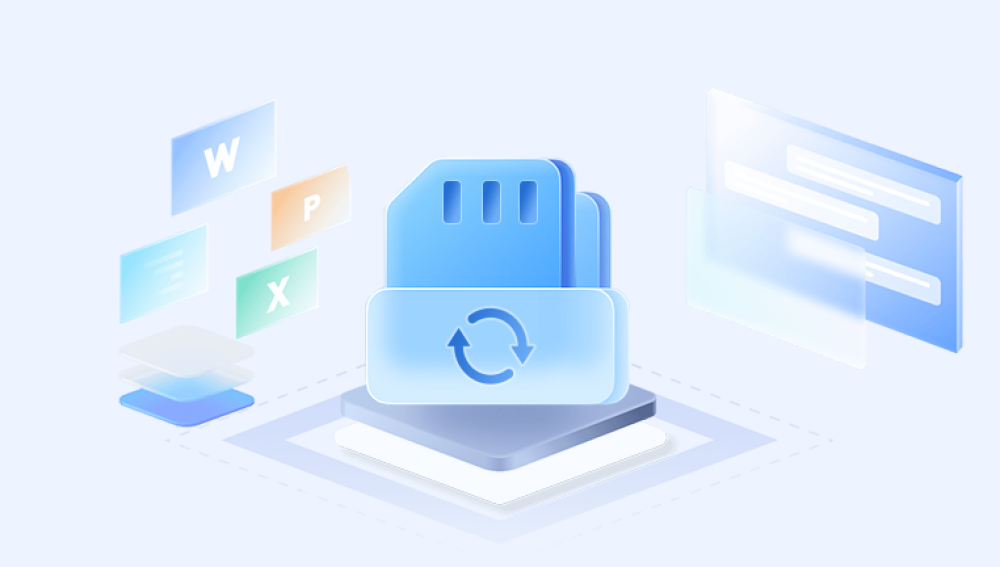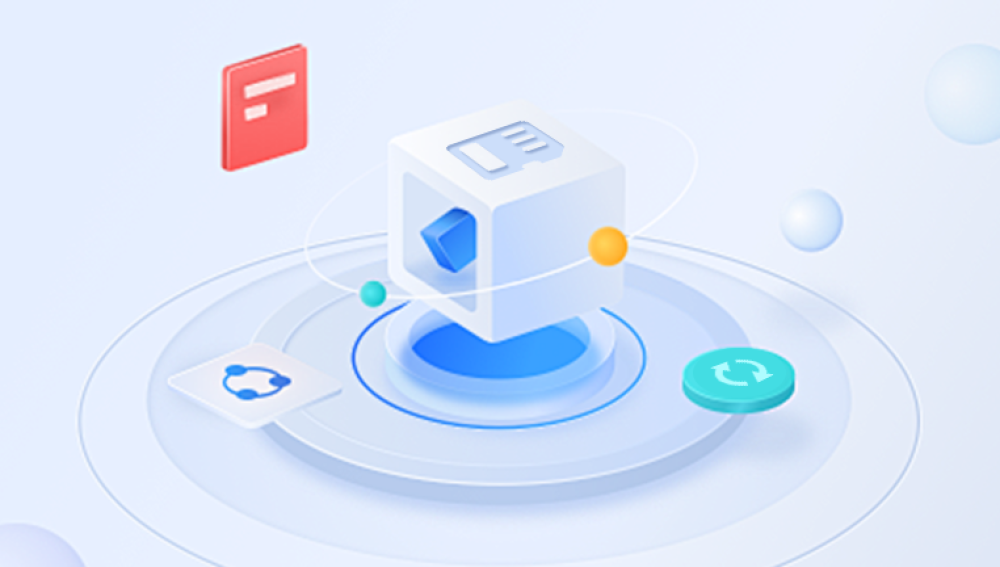Losing files from an SD card can happen for many reasons: accidental deletion, formatting errors, virus attacks, file system corruption, and even physical damage. This can be a traumatic experience, especially when the data lost holds emotional or professional value. But the good news is, just because a file is lost doesn’t mean it’s gone forever. With the right tools and techniques, you can often restore lost files and recover most, if not all, of your valuable data.
Common Reasons for File Loss from SD Cards
Understanding why files get lost can help prevent future occurrences and make the recovery process smoother. Here are the most common culprits:
1. Accidental Deletion
It’s easy to hit “Delete” by mistake especially when managing files quickly. In many cases, deleted files don’t go to a recycle bin when removed from an SD card, making them seem instantly gone.

2. Formatting
Accidentally formatting an SD card, whether on a device or a computer, will wipe out all stored data. Sometimes, formatting is suggested by the system when it can’t read the card.
3. Corruption
Improper ejection, abrupt power loss, or virus infections can corrupt the card’s file system, leading to inaccessible or invisible files.
4. Physical Damage
Bent or cracked SD cards, exposure to water or extreme heat, and general wear and tear can render data unreadable.
5. Virus or Malware
Malicious software can delete, hide, or overwrite files stored on the card.
6. Bad Sectors or Memory Wear
All flash storage has a finite number of write/erase cycles. As memory wears out, some sectors become unreadable.
Initial Actions: What to Do First
Before you try any recovery technique, take these precautions to increase your chances of success:
Stop Using the SD Card Immediately
Writing new data can overwrite lost files, making them harder to recover.
Avoid Formatting
If prompted to format the card, don’t do it. Try recovery first.
Use a Card Reader
Connect the SD card to your computer via a reliable card reader rather than directly through the device.
Method 1: Check for Hidden Files
Sometimes, files may not be deleted but simply hidden.
Steps (Windows):
Insert the SD card into the computer.
Open File Explorer.
Go to the View tab and check Hidden items.
If you find the missing files, copy them to a safe location.
Method 2: Use the Command Prompt (Windows)
The attrib command can unhide files that were hidden due to malware.
Steps:
Open Command Prompt as Administrator.
Type:
bash
attrib -h -r -s /s /d X:\*.*
Replace X: with your SD card’s drive letter.
Press Enter and check if the files reappear.
Method 3: Restore from Backup
Before diving into complex solutions, check whether you’ve previously backed up the SD card:
Look in cloud storage (Google Drive, Dropbox, iCloud)
Check external hard drives or backup software
Review your Recycle Bin if the card was used on a computer
If a backup is available, restoring files from it is often the quickest and safest solution.
Method 4: Use Data Recovery Software
Losing files from an SD card can be a nightmare—whether it’s cherished family photos, important documents, or crucial project data. Fortunately, Drecov Data Recovery makes retrieving lost files from an SD card fast, simple, and stress-free. Designed with both beginners and professionals in mind, Drecov Data Recovery uses advanced scanning algorithms to locate and recover deleted, formatted, or inaccessible files from all types of SD cards, including microSD, SDHC, and SDXC.
What sets Drecov Data Recovery apart is its deep scan capability, which digs beneath the surface to find traces of lost data even after severe corruption or formatting. The tool supports all major file systems such as FAT32. exFAT, and NTFS, ensuring compatibility with a wide range of devices and operating systems.
Method 5: Use macOS Terminal Tools (for Mac Users)
macOS has built-in Terminal tools that may help.
Steps:
Open Terminal.
Use diskutil list to find your SD card.
Use fsck_msdos or similar tools to attempt repairs:
bash
sudo fsck_msdos -y /dev/disk2
Replace /dev/disk2 with your SD card’s actual path.
Method 6: Professional Data Recovery Services
If the SD card is physically damaged or the data is extremely valuable, you may need to contact professional data recovery services. These services often use specialized tools in cleanroom environments to extract data directly from the card’s memory chip.
Top Services:
DriveSavers
Ontrack
Secure Data Recovery
Pros:
Highest success rate
Handles physical and logical damage
Cons:
Expensive
May take several days
Can I Recover Specific File Types?
Yes. Most recovery tools allow file-type filtering so you can recover only what’s important. Common recoverable formats include:
Photos: JPG, PNG, RAW, BMP, TIFF
Videos: MP4. AVI, MOV, MKV
Documents: DOCX, XLSX, PDF, TXT
Audio: MP3. WAV, M4A
You can also recover app-specific files like PSD (Photoshop), LR (Lightroom), and even game saves.
Tips for Better Recovery Results
Start with a quick scan, then go deeper if necessary.
Preview files before recovery to ensure quality.
Save recovered files to a different drive to avoid overwriting.
Be patient—deep scans may take time.
Preventing Future Data Loss
Once you’ve recovered your files, take steps to prevent future loss:
1. Regular Backups
Use automatic backup services to keep your data safe. Google Photos, OneDrive, and Time Machine (macOS) are excellent options.
2. Safe Ejection
Always unmount or eject your SD card safely before removing it from a device.
3. Antivirus Protection
Keep your devices clean with trusted antivirus software to avoid malware that targets storage.
4. Avoid Using Full Capacity
Leave 10-20% of space unused to reduce wear and improve performance.
5. Use Reliable Hardware
Buy SD cards from trusted brands like SanDisk, Samsung, and Kingston. Avoid cheap, unbranded cards.
Frequently Asked Questions
Q1: Are deleted files gone forever from an SD card?
Not immediately. They remain until overwritten, so quick action improves your chances of recovery.
Q2: Can I recover files from a formatted SD card?
Yes. Formatting usually erases the file system references but leaves the actual data intact. Use recovery software for this.
Q3: How long does recovery take?
It depends on the card’s size, the extent of data loss, and the scanning method. Quick scans may take minutes, deep scans could take hours.
Q4: Can I use mobile apps for SD card recovery?
Yes, but they’re often less effective than desktop solutions. It’s best to connect the card to a PC or Mac for recovery.
Q5: Is it safe to continue using a recovered SD card?
If the card is not physically damaged and recovery was successful, you can reformat and reuse it. Otherwise, replace it.
Losing important files from an SD card can be stressful, but with the right approach, you can often recover everything you need. From simple fixes like checking for hidden files to using advanced recovery software and even professional services, there are many avenues to explore. The key is to stop using the SD card immediately after noticing file loss and to act swiftly.
Equipped with this guide, you now have a thorough understanding of how to restore lost files from an SD card. Remember, prevention is just as important as recovery. Regular backups, careful handling, and the use of high-quality SD cards will go a long way in safeguarding your data in the future. Whether you're a traveler, photographer, student, or professional, this knowledge is your safety net when digital memories or important work files go missing.




